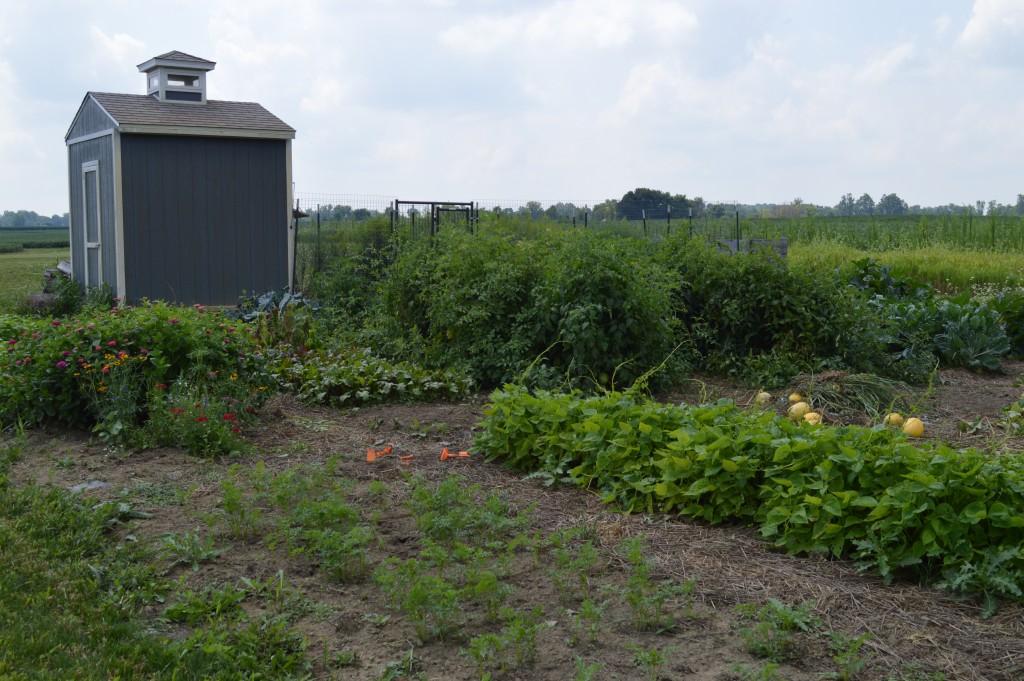Tips for Succession Planting (Getting the Most Out of Your Garden)
Note from Naturally Loriel: Today’s helpful gardening post comes from Claire over at Bloom. I’ve had the opportunity to work with Claire over the past few months as a Scratch Mommy Contributor (I edit all the content that goes out on Scratch Mommy) and I LOVE her knowledge in gardening and chickens.
If you haven’t checked her out, you MUST check out this cherry tomato vinaigrette and this hilarious and relatable post called, “Chickens Should Come With Warning Labels.” I’m so excited to have you here Claire — thanks for joining us!
Gardening is funny.
It is viewed as a relatively simplistic practice. Gardener’s tend to be people who aren’t necessarily excessive and don’t have many over the top “wants.”
But a weird thing happens once you figure out that you can grow your own food: all you want to do is to grow more. And, more. And, MORE.
Succession planting is a great way take advantage of your garden space, however big or small it may be, and to ensure the largest produce yields possible. Not to mention it is great for the soil in your garden beds providing constant life and vitality through nutrients like nitrogen and organic matter. As well as preventing the sun from drying out your soil.
There are two basic things you can do to be successful in succession planting and create a constant supply of homegrown vegetables to your table.
1. Stagger your planting
Staggering your planting lets you stagger your harvest. It works well with crops like greens and lettuce so that it all is not ready for harvest at once, but rather, you have fresh garden greens available over a long period of time.
Other vegetables that work best with staggered planting are things like radishes, beets, and carrots.
Planting these crops in two to three week intervals helps you to extend the season and give you a continuous supply of vegetables to harvest.
2. Making the most of your space
This is sometimes called “interplanting” and it capitalizes on the different growth cycles and sizes of plants. Here are a few styles of interplanting that I put into practice in my garden:
- Planting lettuce and other greens in the same beds as peas or sweet corn. The taller crops help to shade the greens from the sun.
- Plant fast growing radishes with slow growing tomatoes. The radishes will mature before the tomatoes grow large enough to shade them out.
- Putting crops with short roots such as green onions and beets in between larger, short crops like cabbage.
Some seasoned gardeners even swear by specific interplanting combinations, such as tomato and basil or broccoli with onions in the same bed, to ward off pests.
Succession planting is a great way to grow more food (even on a small piece of land), increase the quality of garden soil and garden produce, and help even the most novice gardeners grow more food!
And, isn’t that what all gardeners really want?
Find organic, non-hybrized seeds that are not affiliated with Monsanto in my seed store!
Claire is a City Girl Transplant that now lives on eighty panoramic acres in the country and writes for Bloom. Bloom is a local food and backyard gardening blog full of recipes and humous realities of what life is like when you own chickens… and designer shoes. Through the sarcasm and the dirt, there is an underlyng theme of growth in every sense. Claire is a longtime foodie with a career in the food industry and a passion for wholesome, home cooked meals.








One Comment